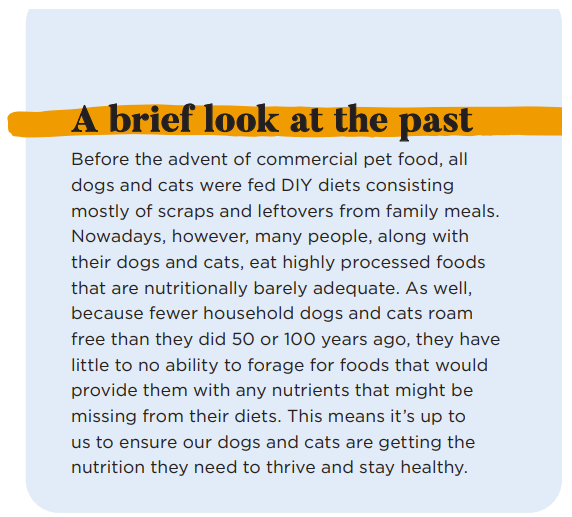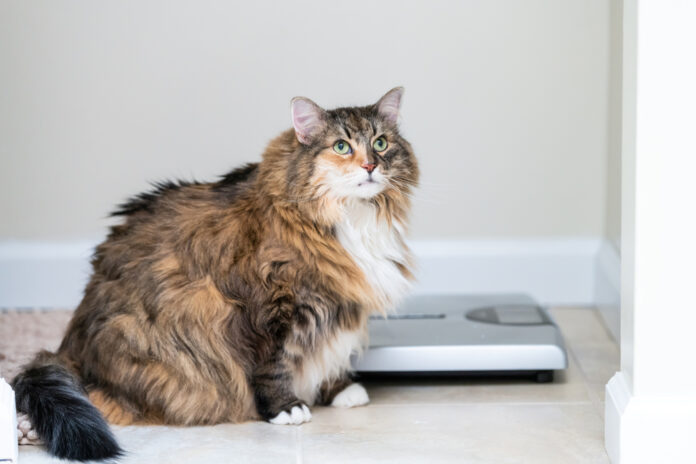Home-preparing pet food – what you need to know

Thanks to animal cookbooks and internet recipes, home-preparing food for your dog or cat has never been more accessible. But making sure he’s getting a nutritionally balanced diet is trickier, and requires understanding some key points about canine and feline nutrition.
Are you attracted to the idea of home-preparing your dog or cat’s meals? Many people have gone this route because it’s a way to take some control over the foods and ingredients their animals are eating, thereby helping to ensure a healthier diet. But to be successful, you first need to know something about canine and feline nutrition, and how to prepare balanced meals that meet your companion’s needs. Otherwise, your dog or cat could end up becoming deficient in some nutrients while ingesting too much of others. In this article, we’ll look at some key points you need to be aware of when home-preparing pet food.
#1. Know that home-prepared diets involve more than muscle meat
Home-prepared pet food can be either raw or cooked, depending on preference. Just keep in mind that wild canines and felines eat the whole prey animal, not just the muscle meat. Many people get squeamish at the idea of feeding organs, eyeballs, intestinal contents, and hair to their dogs and cats; not to mention, most of these body parts are impossible to find in the grocery store! Yet they provide trace vitamins and minerals not found in muscle meat, so a replacement source must be added to home-prepared meals (more on this below).
#2. Understand that home-preparing meals isn’t an exact science
While you should strive to do your best to provide your dog or cat with all the essential nutrients he needs, keep in mind that home-preparing food for animals is not an exact science. Charts describing the nutrient composition of individual foods and ingredients are useful, but each batch of meat or vegetables will have different levels of vitamins and minerals, depending on their growing conditions, their age at harvest, and many other variables. You can compensate for this by offering plenty of variety to your dog or cat, as well as adding in some supplements (again, more on this below). By doing this, it’s not so difficult to feed your animal high quality food that will enhance his health and longevity.
#3. Work with a veterinarian to catch potential nutritional imbalances
No matter how well-informed you are on home-preparing food for your dog or cat, it’s always a good idea to have your veterinarian examine and do lab work on him at least twice a year, just to make sure he isn’t suffering from any nutritional deficiencies or excesses. Such issues will not be immediately apparent since dogs and cats are resilient and will survive for long periods, even years, on diets that aren’t wholly balanced. However, cats can develop ill health more quickly than dogs when fed diets that lack essential nutrients.
Provide the vet with a printed list of the ingredients you use to make your animal’s meals. Try to work with a holistic or integrative veterinarian if you can – many mainstream vets are not well-versed on the formulation of homemade dog and cat food and may even warn that it is impossible to make your own balanced pet food.
#4 Include these essential ingredients
The following is a list of four ingredients that are commonly missed in home-prepared pet food recipes. Use this information as a guideline; you may also want to consult with a veterinary nutritionist or food therapist to ensure your dog or cat is receiving complete and balanced nutrition.
Calcium and phosphorous
 Dogs and cats require more calcium than phosphorous in their diet, with a ratio of about 1.2 to 1 being appropriate. However, meats are high in phosphorous and low in calcium, the inverse of what is needed. Green tripe (the first stomach in ruminants such as cows, sheep, and goats) is a good protein source with balanced calcium and phosphorous, although the smell puts a lot of people off.
Dogs and cats require more calcium than phosphorous in their diet, with a ratio of about 1.2 to 1 being appropriate. However, meats are high in phosphorous and low in calcium, the inverse of what is needed. Green tripe (the first stomach in ruminants such as cows, sheep, and goats) is a good protein source with balanced calcium and phosphorous, although the smell puts a lot of people off.
Calcium is generally added to the diet in the form of bone meal, ground eggshells* (1/2 teaspoon per pound of meat in the recipe), or 10% to 15% ground bone in raw diets. Approximately 500 mg of calcium need to be added for every pound of meat in the recipe.
Contrary to popular belief, milk and dairy products do not supply anywhere near enough calcium for home-prepared canine and feline diets. Most general vitamin supplements also do not contain enough calcium. Look for supplements made specifically for balancing home-prepared meals for dogs and cats.
*Use a coffee grinder or food processor to ensure the eggshells are as finely ground as possible.
Vitamin D
Unlike humans, dogs and cats cannot convert sunlight to vitamin D. Vitamin D3 (cholecalciferol) must be supplied in the diet. This fat-soluble vitamin is found naturally in egg yolks and fish. Diets that contain one of these ingredients daily will come closer to providing appropriate vitamin D levels to your animal. I do not recommend using cod liver oil as a source of vitamin D as it is also very high in vitamin A, which can be toxic in large amounts.
Vitamin D helps regulate the calcium and phosphorous balance, and assists with bone growth and density as well as immune system function. It also aids in cancer prevention. However, excess vitamin D will lead to toxicity, causing kidney and bladder stones and possibly kidney failure. Human vitamin D supplements are too concentrated for animals. The average requirement is 227 IU of vitamin D per pound of food.
Vitamin D testing should be performed at least twice a year for any dogs or cats fed a home-prepared diet.
Trace minerals
Selenium, zinc, copper, iron, and manganese are important nutrients for skin, blood, tendon, immune system, and ligament health. When not provided in adequate amounts, animals may suffer from poor hair coat, anemia, decreased wound healing, poor immunity, and ruptured ligaments.

Many of these trace minerals are found in animal organs. Feeding your dog or cat liver, heart, pancreas, and kidney will provide minerals not found elsewhere. Organs can be difficult to find and many people don’t like handling them, but the diet will be incomplete without them.
Chlorella, spirulina, and kelp are good plant sources of trace minerals. They do not replace organ meats, but feel free to include both plant and animal sources in your dog or cat’s diet. Mussels and oysters are also fairly good sources of trace minerals. Feeding one mussel or oyster each day should be adequate.
Vitamin E
The quantity of unsaturated fatty acids in the diet will determine the required level of vitamin E. Diets high in fish, or fish and plant oils, will require more vitamin E. Average requirements are around 25 IU to 50 IU of vitamin E per pound of food per day.
Alfalfa meal, ground sunflower seeds, and wheat germ are good sources of vitamin E, while milk and dairy products are not.
When collecting recipes for your dog or cat, make sure they are complete and balanced, and/or that you are well-versed in the supplements needed to make them complete. While it is not imperative that every single meal is balanced, it is imperative that every essential nutrient is provided over the course of each week.
Home-preparing your dog or cat’s food can be very satisfying, and as long as it’s done properly, can contribute a great deal to his health and longevity.




